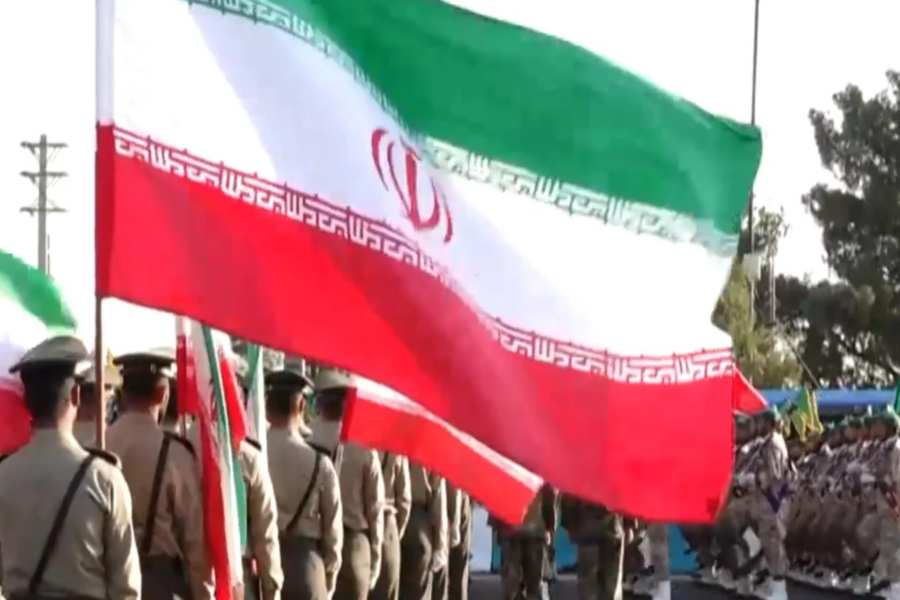In a significant development in international diplomacy, the United States and Iran have resumed talks over Tehran’s advancing nuclear program, with Iranian state television reporting that further negotiations are scheduled for next week. The talks, which took place Saturday in Oman, mark the first direct engagement between the two countries since former President Donald Trump returned to the White House.
According to Iranian media, the meeting occurred on the outskirts of Muscat and included U.S. Mideast envoy Steve Witkoff and Iranian Foreign Minister Abbas Araghchi. The talks were facilitated by Oman, which has historically played the role of neutral mediator between the two nations.
Though the discussions were primarily indirect—mediated by Omani Foreign Minister Sayyid Badr Albusaidi—the event still marked a notable step in long-frozen diplomatic relations. Iranian state TV later confirmed a brief face-to-face interaction between Witkoff and Araghchi at the conclusion of the meeting.
The White House described the initial round as “very positive and constructive.” A statement issued Saturday emphasized President Trump’s directive for diplomacy, stating: “Special Envoy Witkoff underscored to Dr. Araghchi that he had instructions from President Trump to resolve our two nations’ differences through dialogue and diplomacy, if that is possible.”
Trump, speaking briefly to reporters Saturday evening, acknowledged the talks were “going okay,” but cautioned that no outcome would be final until a deal was achieved. “Nothing matters until you get it done,” he said.
The diplomatic meeting, which lasted more than two hours, began at 3:30 p.m. and ended around 5:50 p.m. local time. Shortly after the talks commenced, Iranian Foreign Ministry spokesperson Esmail Baghaei confirmed on social media that “indirect talks” had begun. In a follow-up appearance on Iranian state TV, Baghaei reiterated Iran’s commitment to diplomacy.
“Our objective is very clear — to safeguard Iran’s national interests,” said Baghaei. “We are giving a genuine and honest opportunity to diplomacy so that through dialogue, we can move forward on the nuclear issue and, more importantly, secure the lifting of sanctions.”
Baghaei noted that the opening round was not expected to be lengthy, emphasizing that both sides were simply laying out their foundational positions through the Omani mediator.
Iranian Foreign Minister Araghchi also addressed Iranian journalists, stating, “If there is sufficient will on both sides, we will decide on a timetable. But it is still too early to talk about that.” Araghchi emphasized that the talks would remain focused solely on the nuclear issue and that any potential agreement must be equitable and aligned with the national interests of the Iranian people.
While Iran has presented the talks as indirect, both Trump and Witkoff have described the engagement as direct in nature. Witkoff, speaking to The Wall Street Journal before his departure, stated: “I think our position begins with the dismantlement of your program. That is our position today.” He added that while compromise might be possible in some areas, there would be no room for Iran to weaponize its nuclear capabilities.
Central to the negotiations are two contentious issues: sanctions relief and uranium enrichment. The U.S. could potentially ease sanctions that have severely impacted Iran’s economy, but it remains unclear what concessions Tehran would be willing to make in return.
Under the 2015 nuclear agreement, Iran was limited to maintaining a small stockpile of uranium enriched to 3.67%. Since Trump’s unilateral withdrawal from the deal in 2018, Iran has expanded its nuclear program significantly. Today, its enriched uranium levels reach as high as 60% purity, just short of the 90% needed for weapons-grade material. Analysts believe Iran now possesses enough fissile material to potentially produce multiple nuclear warheads.
Experts suggest Iran may be willing to cap enrichment at around 20% in future agreements, but is unlikely to give up its nuclear program entirely. This makes proposals like the “Libyan solution”—advocated by Israeli Prime Minister Benjamin Netanyahu—unfeasible. That plan, which calls for the complete dismantlement of Iran’s nuclear infrastructure under U.S. supervision, has been flatly rejected by Iranian officials.
Despite these hurdles, both sides appear to be taking a measured approach toward de-escalation. According to observers, Saturday’s talks concluded with an understanding that further negotiations would take place in the coming week, again facilitated by Oman.
Witkoff’s delegation, accompanied by U.S. Ambassador Ana Escrogima, arrived at the Omani Foreign Ministry on Saturday afternoon before traveling to a secure compound on the outskirts of Muscat. AP journalists observed the convoy leaving the ministry and heading to the site of the talks.
Following the meeting, Iranian Foreign Ministry spokesperson Baghaei reiterated Iran’s openness to dialogue but stressed that diplomacy must produce tangible benefits for the Iranian people. “This is just the beginning,” he said. “We do not expect this round of negotiations to be lengthy.”
The international community will be watching closely as the talks resume. With the threat of conflict always looming in the background, and Trump repeatedly warning of military action should diplomacy fail, the outcome of these discussions could have far-reaching consequences—not just for U.S.-Iran relations, but for regional and global stability.

